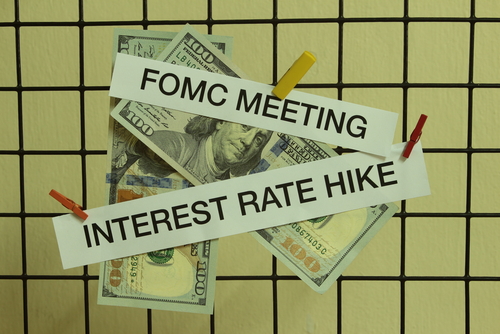
Monetary Policy & Inflation | US

Monetary Policy & Inflation | US
This article is only available to Macro Hive subscribers. Sign-up to receive world-class macro analysis with a daily curated newsletter, podcast, original content from award-winning researchers, cross market strategy, equity insights, trade ideas, crypto flow frameworks, academic paper summaries, explanation and analysis of market-moving events, community investor chat room, and more.
Yesterday’s meeting was eagerly anticipated by markets because, after the July FOMC meeting, many market participants (excluding your writer) had thought the Fed was going to announce a dovish pivot. This view was also supported by the July CPI print that came in below expectations.
In the end yesterday’s FOMC turned out more hawkish than markets expected.
As consensus and I expected, the Fed hiked the Federal Fund band 75bp to 3- 3.25%. The statement was identical to July’s except for an upgrade of the assessment of spending and production, from ‘have softened’ in July to ‘modest growth’.
The hawkishness came through the dot plot dot (that survived) and the tone of the presser. The dot plot showed another 125bp increase in the end-2022 FFR against my expectations of 100bp (Chart 1). The maximum FFR (Feds Funds Rate) the Fed expects over the tightening cycle (AKA the terminal rate) was lifted to 4.6%, roughly in line with my expectations.

The SEP (Summary of Economic Projections that the Fed publishes 4 times year) continued to show a soft landing scenario, which was what I expected. The Fed has no appetite for being upfront and telling the public about the coming pain they are likely to go through.
In the SEP, the unemployment rate peaks at 4.4% in 2023-24 and falls to 4.3% in 2025. This is above the Fed estimate of the LT unemployment or U* that is 4% but well below most realistic estimate, for instance the San Francisco Fed’s 6%. Despite this very small increase in unemployment, the SEP forecast that inflation falls smoothly back to target in 2025. Growth slows to 0.2% YoY in 2022 and rises thereafter to 1.8%, its LT trend, in 2025.
The Fed has now hiked 225bp in 6 months. This is the fastest pace of increase since they started targeting the FFR in 1982 (Chart 2).

Due to Fed communications, since the July meeting, highlighting that ‘at some point it will become appropriate to slow the pace of increases, while we assess how our cumulative policy adjustments are affecting the economy and inflation’, I was expecting the Fed to slow to a 50bp hike /meeting clip over the remainder of 2022.
This is what central banks tend to do during hiking cycles. Monetary policy tightening tends to impact the real economy with long and variable lags. These lags are not well understood and tend to vary with each tightening cycle.
Because the lags are hard to predict, central banks typically pause or slow hike to assess their impact on the economy. Slowing allows the lags to play out and lower the risks of over tightening.
The dot plot shows that I was wrong. When then, is the Fed likely to slow?
Chair Powell was asked this question repeatedly during the presser. His answers were:
These answers make clear that the Fed will not slow when it expects to have done enough to bring inflation back to target. Rather the Fed will slow the pace of rate hikes when it sees actual inflation and growth slow in a convincing manner. Convincing manner likely means a string of consecutive data showing inflation and growth are headed down.
In other words, the Fed will need to see the whites of the eyes of disinflation before it will slow its hiking pace.
Powell further indicated that ‘we have just moved into the very lowest of what might be restrictive’. He further indicated that he wanted the real FFR to turn positive, though this was based on ‘forward looking’ inflation expectations, which gives him a lot of leeway considering how many ways such data can be estimated. Nevertheless, the message is clear: Chair Powell is prepared to go much higher.
This suggests the Fed could hike at a 75bp/meeting clip at least until mid-2023 (i.e. the FFR could be close to 8% around mid-2023) for 2 reasons.
First, the economy still has a lot of momentum (please see Q2 GDP: Growth to Turn Positive in H2).
Second, because of more than a decade of very low rates, the real economy has become much less sensitive to financial conditions. Fed policy tightening is likely to have much less of an impact on the real economy than consensus assumes.
As a result, even if the Fed manages to tighten financial conditions, employment growth and inflation are unlikely to slow much. I intend to develop these themes in future research.
This is a different FFR scenario from my previous expectations that the Fed would slow its hikes, realize in early 2023 that inflation and growth were not slowing, and announce a major increase in the terminal rate in March 2023.
Markets are underpricing Fed hikes in 2022-23. In addition, my FFR views imply further downside for equities as well as a much deeper curve inversion than currently 55bps (2s10s).
Spring sale - Prime Membership only £3 for 3 months! Get trade ideas and macro insights now
Your subscription has been successfully canceled.
Discount Applied - Your subscription has now updated with Coupon and from next payment Discount will be applied.